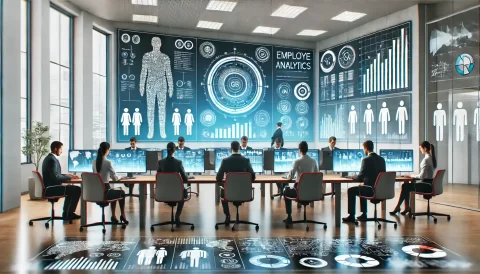Even with recent society-wide advances in worker safety, warehouses remain inherently hazardous work environments. The presence of heavy machinery and high stacking systems coupled with busy, fast-paced operations would be a recipe for disaster were it not for a long list of standard safety procedures, many of which were written into the books after unfortunate incidents.
As important as these protocols are, such systems are only as good as the people running them. While individual employees must be fastidious when following warehouse safety rules, it is really up to the warehouse managers and Human Resources (HR) professionals to ensure that the production floor is well organised, hazards are regularly assessed, and safety protocols are thoroughly enforced.
Outside of the warehouse’s top management, HR departments play the most vital role in guaranteeing safety. Everyone with an HR role must ensure that workers are properly qualified and supported to create a meaningfully safe work environment. Here are a few ways HR champions can contribute to this effort:
1. Hiring with Safety in Mind
A safety culture starts with the right people. Though it’s true that HR must develop all employees up to set standards, they must also recruit candidates with relevant experience in warehouse safety protocols. They should also ensure that those new to the field have on-the-job training facilitated by knowledgeable mentors who themselves are well-versed in warehouse safety.
For more technical roles, HR must also look into the specific warehousing experience that each candidate has as well as the practicality of further developing them. For instance, an order picker forklift operator who’s meant to fill a role ASAP must have at least several hours of using these machines to ensure safety on the production floor. In contrast, if the need isn’t so urgent, then HR may hire a less experienced operator and facilitate in-depth training in a controlled environment to build up their skills. This strategic approach allows HR to meet the business’s immediate operational demands as well as its long-term safety goals.
2. Designing Comprehensive Safety Training Programmes
HR professionals must be responsible for designing and implementing training programmes that educate warehouse employees on safe working procedures. These programmes must cover both initial training for new hires as well as refresher courses for long-term employees.
These training programmes must also be comprehensive. Apart from teaching basic safety procedures, they should also lay out the numerous specific risks involved in operating heavy machinery and handling hazardous materials. Case studies involving real-life accidents must be effectively presented using a blend of theory and practical demonstrations to cater to different learning styles.
Once the teams are thoroughly knowledgeable about potential safety hazards in the production area, HR teams can collaborate with warehouse supervisors to set clear safety benchmarks. Benchmarks can include goals for reducing workplace injuries, incident response times, as well as stricter compliance with safety protocols.
HR must ensure that the reasoning behind these benchmarks is well-understood, reemphasising the lessons taught during safety training. Internal communications, workshops, and reward programmes that recognise exemplary employees can further reinforce the organisation-wide prioritisation of workplace safety.
3. Adopting a Metrics-Based Approach to Safety
Even well-informed and experienced workers may fail to act safely if they feel that there is no immediate reason for them to do so. This can be especially true in busier warehouses where the need to hit production metrics often outweighs safety in practice.
Making safety a key performance indicator (KPI) is often the only way both workers and supervisors can turn safe practices into second nature. Developing KPIs can be challenging, but it’s often necessary to develop an ingrained safety culture throughout the whole business. Using KPIs should, over time, guarantee that safety is seen as a core component of job performance and not a peripheral issue.
4. Encouraging Self-Driven Development
Apart from simply expanding benchmarking to include more safety-related responsibilities as KPIs, HR can offer voluntary safety workshops and e-learning modules where workers can earn certifications that help their careers. These can be internally developed or created in partnership with industry and public stakeholders. Such programmes can be a powerful incentive for workers to stay updated with the latest safety practices.
5. Monitoring and Adapting Safety Policies
The introduction of new technologies like advanced machinery and robots in warehouse environments necessarily means that safety standards must evolve. Floor workers must be made aware of the potential safety issues surrounding these new additions which means that HR departments tasked with developing them need to engage with technology suppliers and do their due diligence. Employment policies may also need to be reviewed to ensure that new hires can interact with these new technologies safely.
6. Developing Safety Champions in Top Leadership
As pointed out earlier, HR is not the most important driver of safety culture. In any business, top management’s attitudes will always be the key thing that influences the wider culture of the organisation. With that in mind, HR should serve to communicate effectively with top leaders the importance of safety in modern warehouses. If HR departments can make a strong case for safety, they may move leaders to strengthen the organisation’s overall safety culture.
Protecting Warehouse Workers Through Proactive HR Leadership
Even with the leaps we’ve collectively made in improving warehouse safety, busy warehouses are going to remain inherently risky for the people who work in them. Knowing this, the departments and individuals who may hold the most sway over safety matters should be accountable for developing safe and humane work environments. Because HR departments typically function as a key instrument in enforcing business decisions, it’s both their professional and moral responsibility to do what they can to prevent harm on warehouse production floors.




